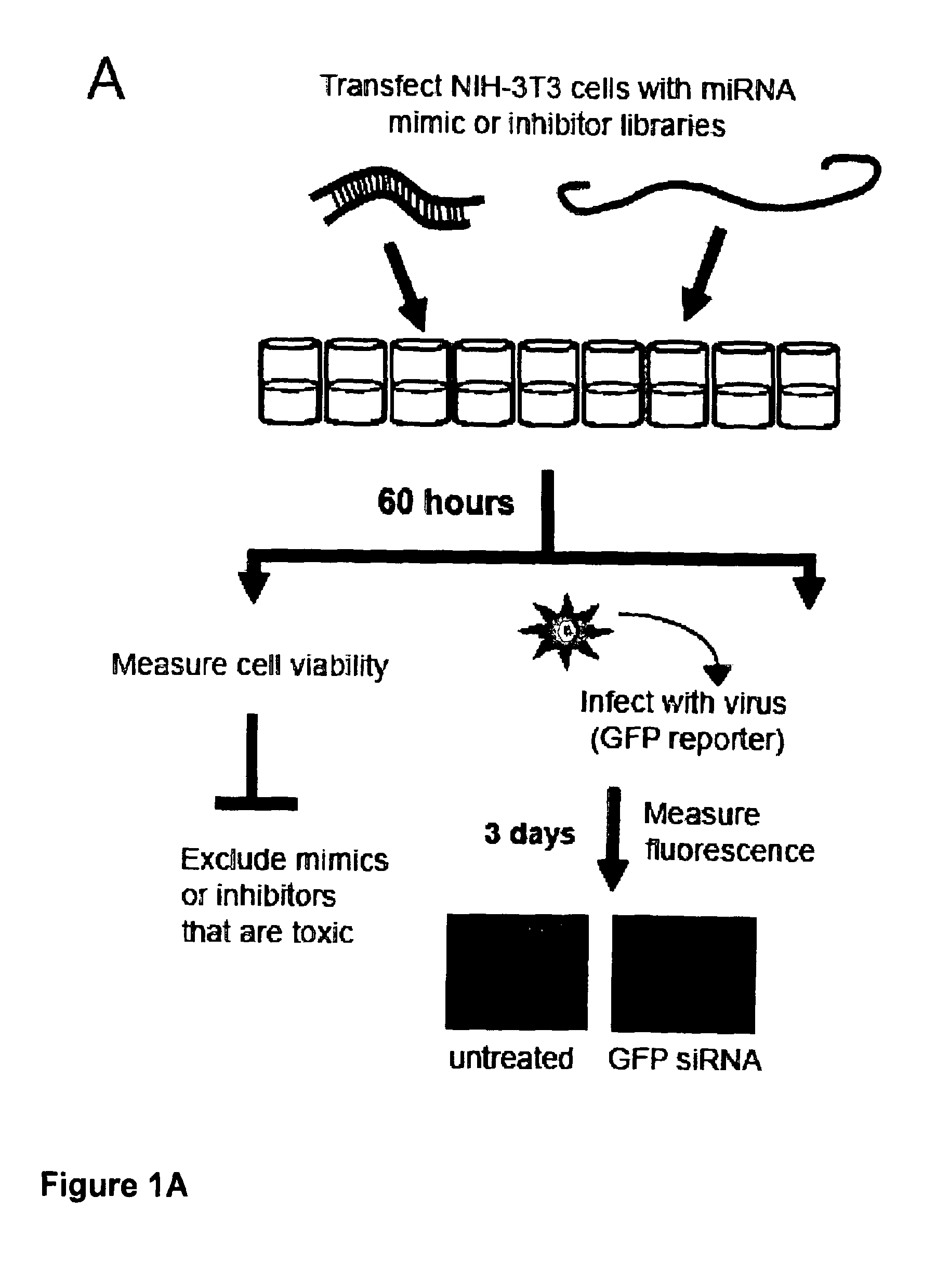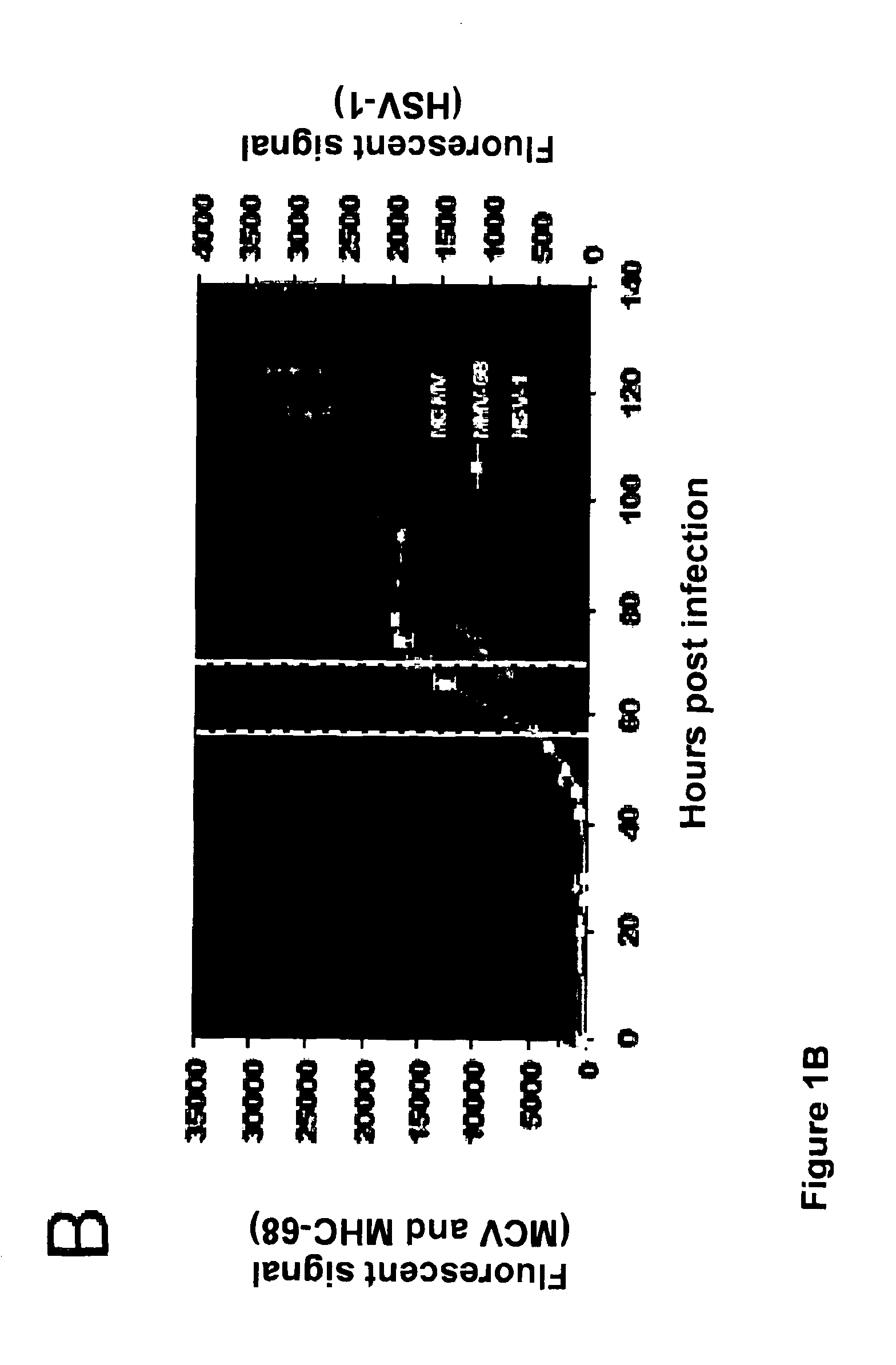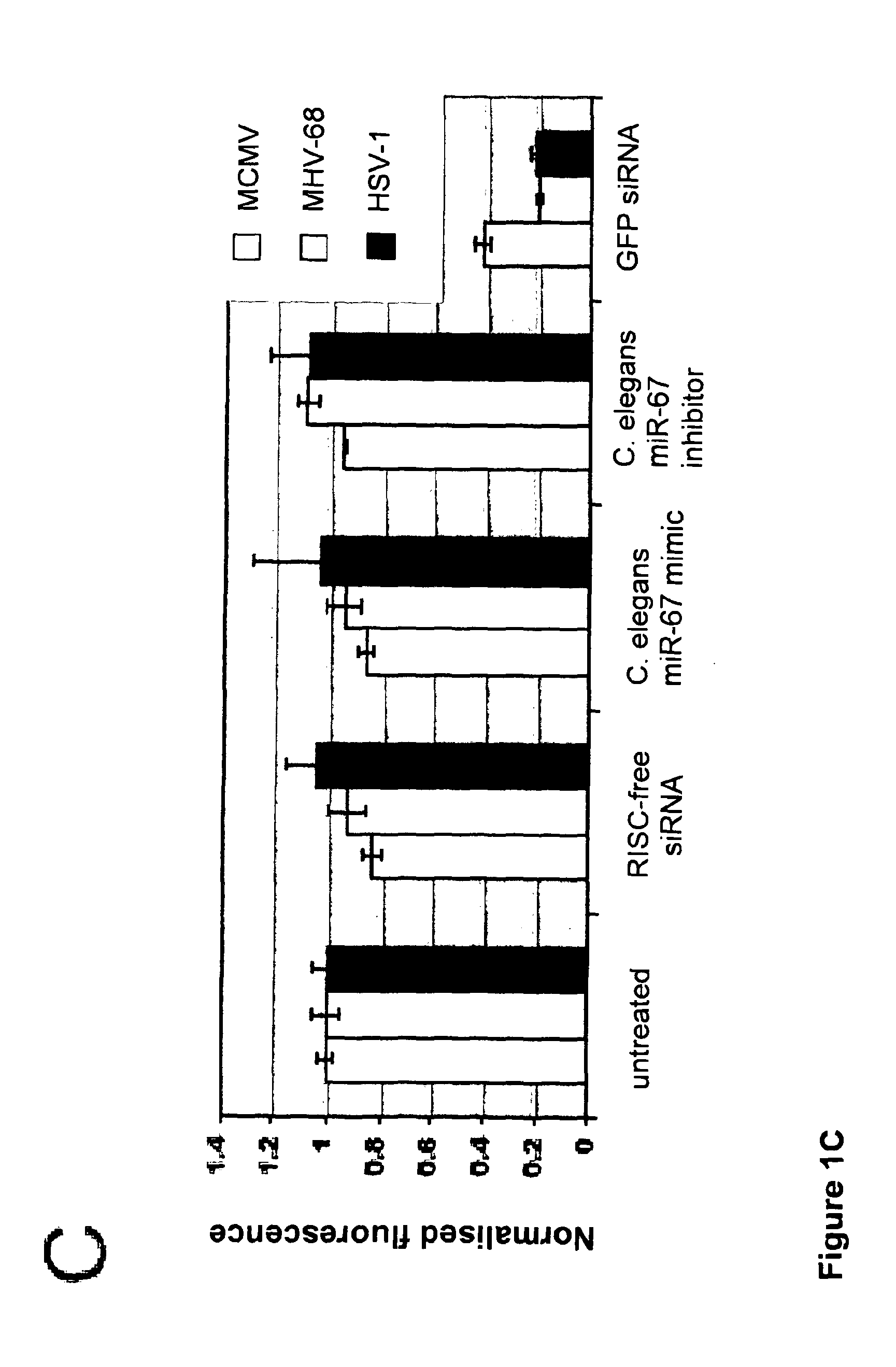Anti viral therapy
a technology of anti-viral therapy and target site, which is applied in the field of anti-viral therapy, can solve the problems that the identified micrornas would be limited to the function against the virus with the target site, and achieve the effect of inhibiting replication and/or propagation
- Summary
- Abstract
- Description
- Claims
- Application Information
AI Technical Summary
Benefits of technology
Problems solved by technology
Method used
Image
Examples
Embodiment Construction
[0088]The present invention will now be described in more detail with reference to the following Figures which show:
[0089]FIG. 1: Agonist-antagonist miRNA screening. (A) Overview of screening protocol: miRNA mimics or inhibitors were reverse transfected into NIH-3T3 cells (6 technical replicates) and incubated for 60 hrs prior to cell viability analysis (n=3) or infection with GFP virus (n=3). (B) Fluorescent growth curve of GFP-reporter viruses in NIH-3T3 cells; Y1 axis shows values for MCMV and MHV-68 and Y2 shows values for HSV-1; error bars depict standard deviation of 3 technical replicates. White lines indicates time points used for subsequent analysis. (C) Normalized fluorescence data (at 70 hours post infection, hpi, for MCMV and 57 hpi for MHV-68 and HSV-2). Negative controls (RISC-free siRNA, C. elegans miR-mimic or C. elegans miR-inhibitor) have 50% knock-down using siRNA targeting GFP (n=3, error bars depict standard deviation).
[0090]FIG. 2: Viral growth curve of MCMV in...
PUM
| Property | Measurement | Unit |
|---|---|---|
| length | aaaaa | aaaaa |
| nucleic acid | aaaaa | aaaaa |
| fluorescent | aaaaa | aaaaa |
Abstract
Description
Claims
Application Information
 Login to View More
Login to View More - R&D
- Intellectual Property
- Life Sciences
- Materials
- Tech Scout
- Unparalleled Data Quality
- Higher Quality Content
- 60% Fewer Hallucinations
Browse by: Latest US Patents, China's latest patents, Technical Efficacy Thesaurus, Application Domain, Technology Topic, Popular Technical Reports.
© 2025 PatSnap. All rights reserved.Legal|Privacy policy|Modern Slavery Act Transparency Statement|Sitemap|About US| Contact US: help@patsnap.com



